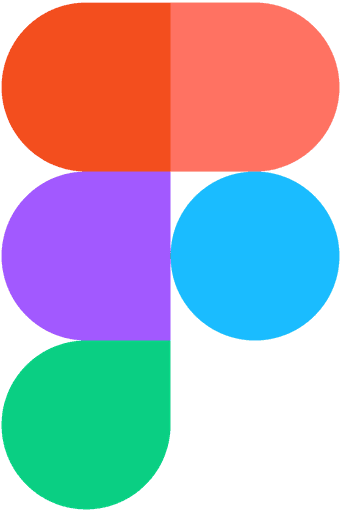Saarthi
Project: Internal Patient Management Tool for NGOs
Description: Saarthi is a lightweight internal platform helping NGO workers track, coordinate, and respond to hemophilia care needs in low-tech areas.
Org: Hemophilia Federation India (HFI) — Delhi-based NGO with 1000+ field workers
Platform Type: Internal tool
Timeline: September 2022 – March 2023
Role: UX Designer (Infusion Tracking, Emergency Assist)
HFI, Delhi , india
1983
NGO
$35.2 Million (2025)
1,000+
Problem Space: Fragmented, Manual, and Life-Threatening
In rural India, field workers supporting hemophilia patients face constant hurdles:
Records are paper-based or split between WhatsApp groups, diaries, and memory.
Emergency response is manual — with delays of over 15 minutes for internal bleeds.
Existing digital tools were complex, English-heavy, and built for hospitals — not grassroots fieldwork.
Results?
⛔ Missed infusions
⛔ Poor aid access
⛔ Life-threatening care gaps
We asked:
How might we help field workers track and coordinate hemophilia care, even with limited connectivity or training?
75%
Improved onboarding process
25%
Increase in user retention
84%
Decrease in time spent on website
Design Challenge
How might we help grassroots field workers track and coordinate hemophilia care in areas with low tech, limited literacy, and urgent needs?
My Contribution
Led field research synthesis and journey mapping
Designed key modules: Infusion Tracking and Emergency Assist
Advocated for offline-first flows with backend team
Co-conducted usability testing with 150+ NGO workers across 3 states
Built high-fidelity Figma prototypes in Hindi and Tamil for testing
Field Research & Mapping
We visited 5 hemophilia camps and shadowed 12 NGO volunteers to uncover real workflows. Using affinity mapping, we narrowed down 3 high-impact pain points:
Field Insights
Speaking to NGO staff, we uncovered 3 key pain points:
🔹 Not Designed for Them
Existing tools were overly complex, English-only, and built for hospitals—not grassroots work.
🔹 Disconnected Information
Infusion history, treatment centres, and patient status were scattered across WhatsApp, diaries, and memory.
🔹 No Real-Time Response
Emergencies required manual phone trees and paperwork, delaying action.
Core Modules
After a design jam and journey mapping session, I distilled the tool into
6 field-friendly modules:
🔹 Patient Profiles – Demographics, diagnosis, severity tag, assigned center
🔹 Infusion Log – Quick tap to log dose, factor batch, time, admin method
🔹 Emergency Assist – One-tap alert with GPS + auto-notify coordinator
🔹 Aid & Insurance – Pre-filled PM-JAY forms, Aadhar uploads, real-time status
🔹 Volunteer Log – Route planner, visit checklists, visit time
🔹 Reports – Auto-generated PDFs of treatment status and vial inventory
Key UX Decisions (and Why)
Infusion Tracking – From 5 mins to < 60 secs
Before: Volunteers filled long paper forms, then called supervisors to update records
After: Tap “Log Infusion” → Select preloaded factor → Auto-filled timestamp & ID
Emergency Flow – One Tap, Real Impact
❌ Before: Phone trees, form filling, panic
✅ After: Tap “Alert” → GPS locates patient → Notifies ambulance + auto-generated report sent via SMS
Why this mattered ?
84% faster incident response
Critical in areas with no stable internet
Usability Testing & Iteration
We tested clickable prototypes in Hindi and Tamil with 150+ NGO workers (literacy range: class 6 to graduate-level).
Top insights that shaped the product:
Purpose:
Clear categories for ease of use even on low-literacy teams
Icon + Label for faster understanding
Starting With The Patient Summary
We designed the profile to be:
Color-coded by severity (mild/moderate/severe)
Tappable summary tiles for infusion frequency, last visit, aid status
Minimal text + icon-based cues
Infusion Tracking Flow
Instead of navigating 3 pages, a volunteer can now:
Tap "Log Infusion"
Select preloaded factor brand
Auto-fill timestamp and batch ID
This reduced tracking time from ~5 mins to under 60 seconds.
Emergency Flow
When a patient bleeds internally:
Tap "Emergency Alert"
Auto-notify nearest ambulance team + staff
Pre-filled report sent via SMS + syncs online
Minimal Viable Product
Dashboard
“ Saarthi isn't just a system—it's a reliable partner in the journey of hemophilia care, bringing confidence and coordination to the people who need it most.. ”
Pawan
CEO,| Hemophilia Federation India
Reflections
Designing for constraint is liberating
What seemed like limitations (low-end phones, no WiFi) helped us strip things to the essential—and users loved the simplicity.
Localisation isn’t just translation
Icons, field names, even button positions mattered. We tested designs in Hindi and Tamil, which brought huge usability insights.
Advocating for design in NGOs
Working with an operations-led team meant pushing for design-led decisions. Sharing usability test recordings helped win buy-in.


















